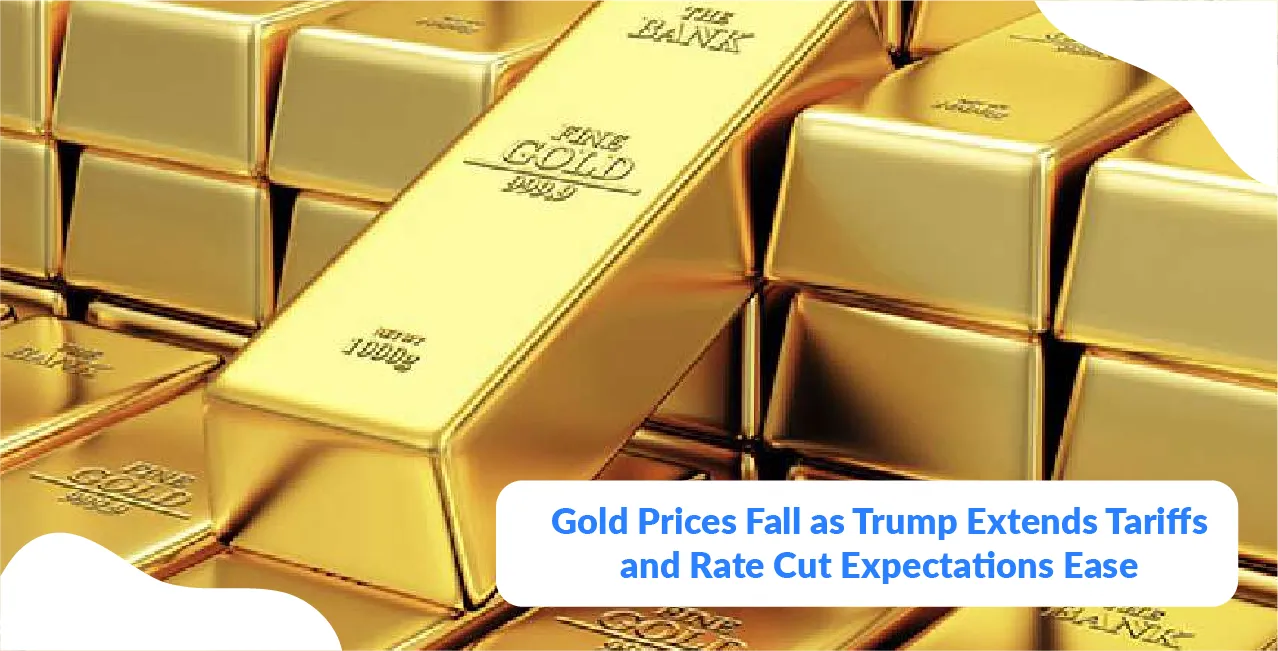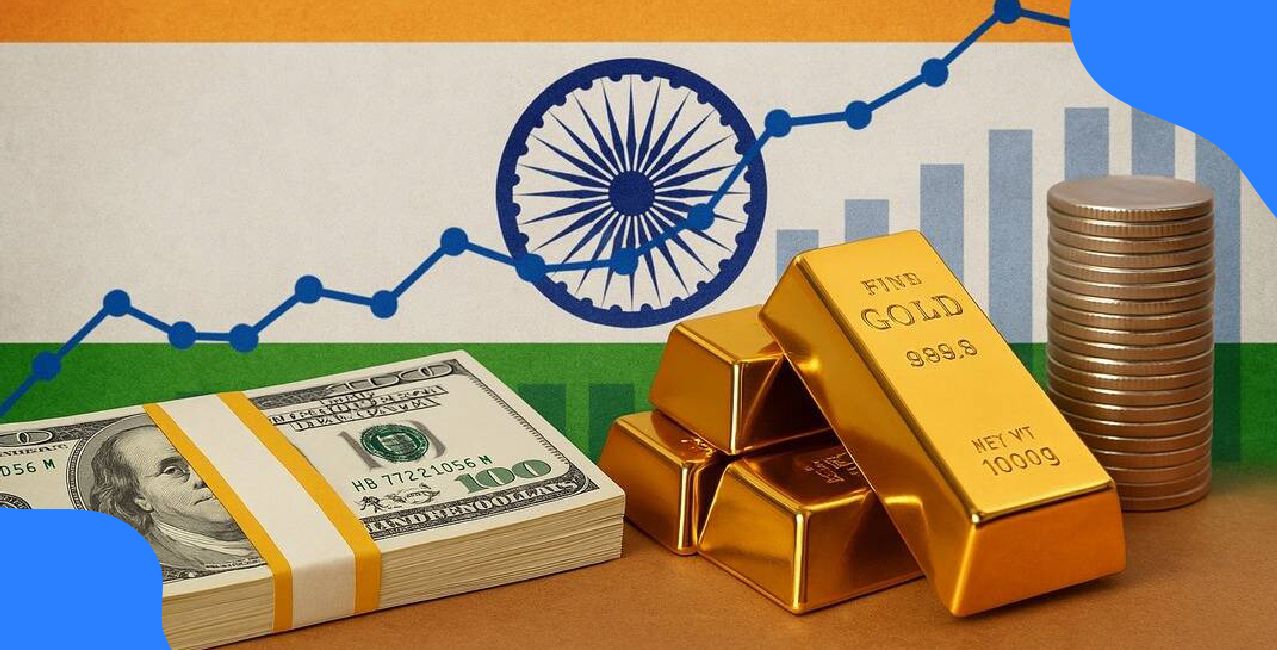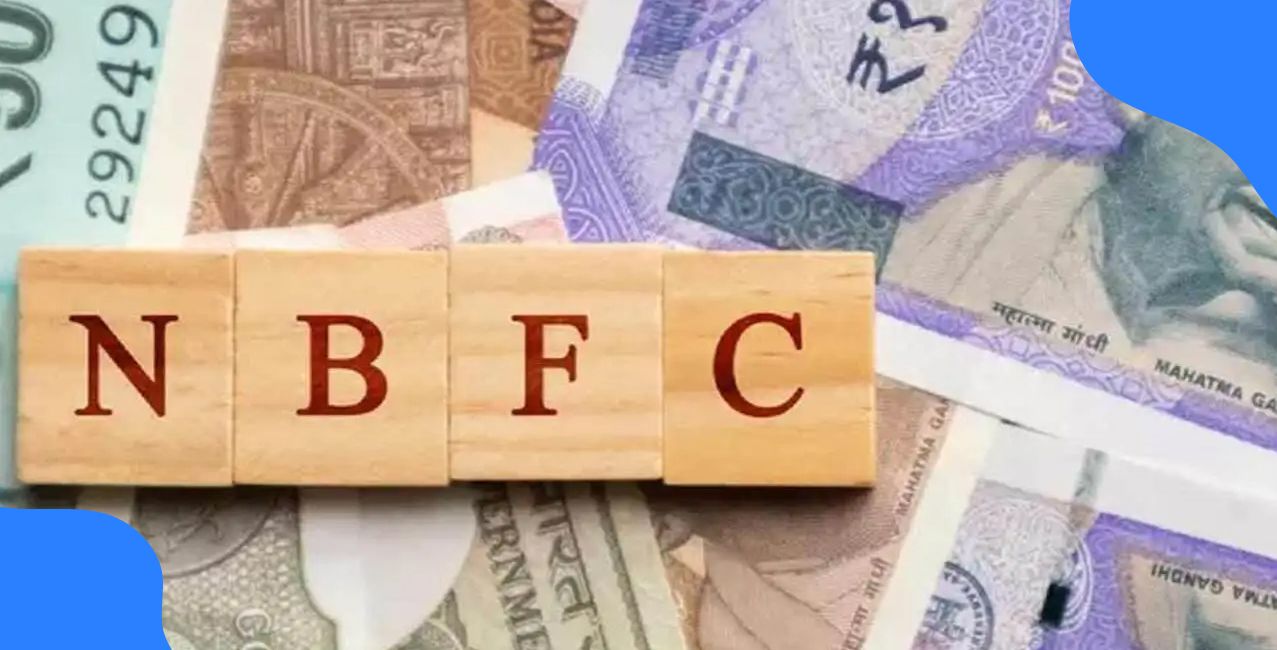
Author
LoansJagat Team
Read Time
4 Min
09 Jul 2025
Gold Prices Fall as Trump Extends Tariffs and Rate Cut Expectations Ease
Gold Buyers Pause as Tariffs and Rates Confuse Markets
The gold market didn’t get the quiet July it hoped for. Instead of calm, traders faced mixed signals, a delayed tariff announcement and no rate cuts in sight.
President Donald Trump extended a round of tariffs, and the U.S. Federal Reserve backed away from earlier expectations of a rate cut. By Monday, July 7, 2025, gold had dropped 0.71 per cent, closing at ₹2,75,300 per 10 grams.
The price drop was small, but the message was clear: government decisions are now having a bigger impact on gold prices than market mood. Many investors who were planning to invest are now holding back because of these policy changes.
Tariff Delay Sends Mixed Signals
The U.S. government announced on July 5 that new tariffs on selected European imports would be delayed until August 1. That delay gave industries some breathing space but didn’t settle the broader worry. Instead of calming traders, the delay brought more questions about future pricing, supply chain stability, and cross-border friction.
Read More – Understanding Share Price Movements in Major Indian Stocks – A Deep Dive
In a June bulletin by the U.S. Treasury, data showed that similar tariffs on Chinese goods between 2018 and 2020 had caused domestic prices to rise by around 0.7 per cent. This time, inflation watchers were quick to reference those earlier patterns. However, the gold market did not respond with its usual buying activity.
Some investors had expected higher inflation to lift gold demand. But the mixed message from Washington, tough talk with flexible timelines, kept many from placing long bets.
Central Bank Stance Changes Tone
Alongside the tariff news, the Federal Reserve’s June 2025 Monetary Policy Report offered little room for rate cuts. Core PCE inflation stood at 2.6 percent in April, still above the 2 percent target. Labor markets remained tight, and consumer spending stayed steady through the second quarter.
Markets that had expected at least two rate cuts by the end of the year are now scaling back those bets. Without lower interest rates, gold becomes less attractive to those looking for low-risk returns. This policy shift influenced a broader pullback across precious metals.
The Fed’s neutral tone may hold unless inflation falls clearly in upcoming months.
Spot Gold Prices (July 2025)
Inflation, Tariffs, and Gold’s Uneasy Path
Inflation is often the key reason investors choose gold. But inflation caused by tariffs is not the same as inflation from growth or stimulus. In fact, when inflation is paired with strong jobs data and high borrowing costs, gold can lose its appeal.
In this case, investors saw higher prices but no relief in interest rates. That combination hurt gold more than it helped. The June report from the Federal Reserve made this link clear: inflation is no longer just a result of supply or demand. It is now being driven by government policy as well.
And that makes gold less predictable in the short term.
U.S. Gold Holdings Stay Steady
While prices moved, national reserves did not. The U.S. Treasury's May 2025 gold reserve report showed holdings remain unchanged at 11,041 troy ounces. The official book value, still listed at $42.22 per ounce, has been in place since the 1970s.
This means that government strategy around gold has not changed. The market is responding to global forces, not domestic supply shifts. That also reduces the chance of large-scale changes in physical gold demand in the near term.
Federal Reserve and Treasury Data
Global Developments May Shift Trends
The gold market is also watching global inflation signals. Any unexpected policy easing by the European Central Bank or China’s central bank could revive demand. As of now, no strong signals have emerged.
Also Read - The Impact of Inflation on Personal Loan Interest Rates in 2025
Analysts expect July’s U.S. Consumer Price Index and the Fed’s next policy comments to set the tone. If inflation starts to slow, and rate cuts come back into the conversation, gold could recover. But if numbers stay firm, the downside may continue.
Until then, traders appear cautious.
Conclusion
The drop in gold prices on July 7 came after a long stretch of optimism around interest rates. With tariffs extended and the Fed holding steady, the gold market has lost the direction it once followed.
Instead of reacting to quick headlines, investors are now watching deeper signals, price reports, wage trends, and international trade patterns. Gold, once a steady answer to global tension, now moves more slowly and more carefully.
Policy decisions are driving the conversation. And until the Federal Reserve or the White House shift position, the gold market will likely remain unsettled.
About the Author

LoansJagat Team
‘Simplify Finance for Everyone.’ This is the common goal of our team, as we try to explain any topic with relatable examples. From personal to business finance, managing EMIs to becoming debt-free, we do extensive research on each and every parameter, so you don’t have to. Scroll up and have a look at what 15+ years of experience in the BFSI sector looks like.

Quick Apply Loan
Subscribe Now
Related Blog Post

LoansJagat Team • 11 Dec 2025

LoansJagat Team • 11 Dec 2025

LoansJagat Team • 12 Dec 2025